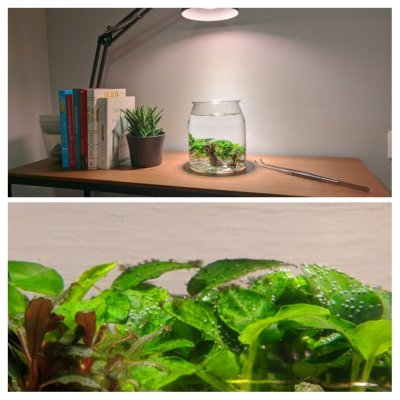I think I accidentally introduced BBA in my tank with a bucephalandra I added recently, and now it is slowly spreading around.
Tank volume is 120 liters (probably less considering high substrate etc), 70 days old. Medium lights, on 8 hours a day. I inject CO2 at 2bps, which turns the drop checker green (had some issues with shrimp when co2 concentrations were higher). Co2 goes on and off 1.5 hours before the lights.
I dose EI daily with a dosing pump (small doses throughout the day). 10ml per day of this https://www.aquasabi.com/Aqua-Rebell-Makro-Basic-Estimative-Index as macro and first 3ml per day of this https://www.aquasabi.com/Aqua-Rebell-Mikro-Basic-Eisen as micro. I reduced the amount to 2ml per day, and now to 1ml per day. I don't know if this will help or not not, but excess iron apparently can cause BBA.
I do partial water changes weekly. Any help is appreciated!
Tank volume is 120 liters (probably less considering high substrate etc), 70 days old. Medium lights, on 8 hours a day. I inject CO2 at 2bps, which turns the drop checker green (had some issues with shrimp when co2 concentrations were higher). Co2 goes on and off 1.5 hours before the lights.
I dose EI daily with a dosing pump (small doses throughout the day). 10ml per day of this https://www.aquasabi.com/Aqua-Rebell-Makro-Basic-Estimative-Index as macro and first 3ml per day of this https://www.aquasabi.com/Aqua-Rebell-Mikro-Basic-Eisen as micro. I reduced the amount to 2ml per day, and now to 1ml per day. I don't know if this will help or not not, but excess iron apparently can cause BBA.
I do partial water changes weekly. Any help is appreciated!

